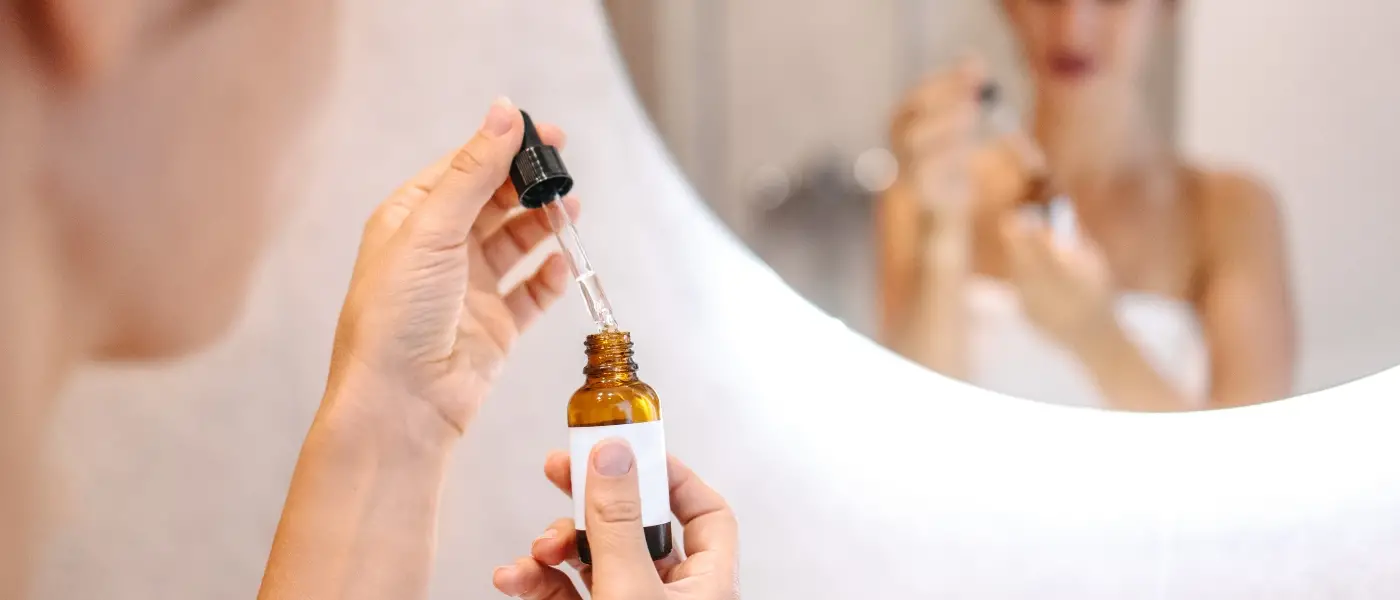
Glucosyl Hesperidin & Hesperidin in Skin Care: The Citrus-Derived Duo Transforming Modern Formulations
In the ever-evolving world of skincare, plant-derived bioactives continue to captivate researchers and product formulators alike. Among them, two standout ingredients have gained increasing attention: Hesperidin and its water-soluble derivative, Glucosyl Hesperidin. Extracted primarily from citrus peels, these powerful flavonoids are celebrated not just for their antioxidant potency, but for their wide-ranging therapeutic effects—from boosting microcirculation and reducing dark under-eye circles to brightening skin and even supporting the skin barrier.
Whether you’re tackling dullness, pigmentation, inflammation, or under-eye fatigue, these naturally derived compounds may be the key to unlocking healthier, more radiant skin.
What Are Hesperidin and Glucosyl Hesperidin?
Hesperidin: A Powerful Citrus Bioflavonoid
Hesperidin is a naturally occurring flavanone glycoside found predominantly in citrus fruits like oranges, lemons, and grapefruits. This compound is especially concentrated in the peel and white pith of the fruit, areas that are typically discarded in food preparation but are goldmines in skincare chemistry.
As part of the flavonoid family (a type of polyphenolic compound), hesperidin boasts strong antioxidant, anti-inflammatory, and vasoprotective properties. It is composed of the aglycone hesperetin and a sugar molecule (rutinose), making it a glycoside in its natural form.
Glucosyl Hesperidin: A Water-Soluble Upgrade
Glucosyl Hesperidin is a biotechnologically modified version of hesperidin. Through a process called glucosylation, a glucose molecule is added, dramatically increasing its water solubility and skin penetration—traits that make it much more effective and stable for topical use in cosmetic formulations.
This conversion doesn’t alter the antioxidant nature of the compound; rather, it enhances its usability, allowing formulators to include it in serums, creams, and under-eye treatments designed for better skin absorption and visible benefits.
Skin Benefits of Hesperidin & Glucosyl Hesperidin
Both compounds deliver a range of cosmetic and dermatological benefits. Though similar in function, Glucosyl Hesperidin offers improved bioavailability, meaning it’s more readily absorbed by the skin and easier to formulate.
1. Powerful Antioxidant Protection
Hesperidin and its glucosylated counterpart help neutralize free radicals generated by sun exposure, pollution, and internal stress. These unstable molecules can damage skin cells, leading to premature aging, collagen breakdown, and a weakened skin barrier. By scavenging these free radicals, hesperidin helps prevent oxidative stress, a root cause of dullness, fine lines, and uneven skin tone.
2. Anti-Inflammatory Effects
Research shows hesperidin suppresses the production of pro-inflammatory cytokines like TNF-α, IL-1β, and IL-6. This makes it ideal for calming sensitive, irritated, or inflamed skin—conditions often seen in rosacea, eczema, acne, or after over-exfoliation.
3. Improved Microcirculation
One of hesperidin’s most exciting skin benefits is its ability to enhance capillary strength and blood flow. This improves nutrient delivery to the skin and helps reduce under-eye puffiness and dark circles, especially when caused by sluggish circulation.
4. Skin Lightening and Brightening
Both hesperidin and glucosyl hesperidin have shown the ability to inhibit tyrosinase, the key enzyme responsible for melanin production. By reducing melanin synthesis, these ingredients diminish hyperpigmentation, melasma, post-inflammatory hyperpigmentation (PIH), and uneven skin tone.
5. Barrier Repair and Moisture Retention
In animal models, hesperidin has demonstrated the ability to accelerate skin barrier repair, enhance filaggrin production (critical for skin barrier function), and promote lipid synthesis, all of which contribute to better moisture retention and skin resilience—especially important for mature or dry skin.
6. UV Protection & Photoaging Prevention
Pre-treatment with hesperidin has been shown to mitigate the damaging effects of UVB and UVA rays in cell and mouse models. It helps reduce:
Lipid peroxidation
DNA damage
Protein carbonylation
Inflammation and erythema
It also promotes the activity of natural antioxidant enzymes like superoxide dismutase (SOD) and catalase, enhancing the skin’s internal defense system.
Skin Concerns Treated by Hesperidin & Glucosyl Hesperidin
Due to their wide-ranging benefits, these compounds are increasingly used in formulas targeting:
Dark circles under the eyes
Eye puffiness and tired-looking eyes
Melasma and general hyperpigmentation
Post-inflammatory hyperpigmentation (PIH)
Redness and irritation from rosacea or acne
Aging and dullness due to oxidative stress
Barrier disruption from harsh treatments
They are commonly found in eye creams, brightening serums, anti-aging lotions, and night repair treatments.
How They Work in the Skin: Mechanisms of Action
🔬 1. Antioxidant & Free Radical Neutralization
These compounds stabilize harmful free radicals by donating electrons, preventing cellular and molecular damage. This maintains collagen structure, reduces signs of aging, and protects against environmental stress.
🔬 2. Anti-Tyrosinase Activity
By inhibiting the tyrosinase enzyme, hesperidin reduces the formation of melanin, the pigment responsible for dark spots and uneven tone.
🔬 3. Barrier Support & Skin Renewal
Topical application has been shown to:
Increase lamellar body secretion (critical for lipid delivery to the stratum corneum)
Boost filaggrin expression, helping build the skin’s outer barrier
Normalize skin pH, which supports healthy microbial balance
🔬 4. Vasoprotective and Circulatory Support
Hesperidin strengthens capillary walls and enhances microcirculation, reducing vascular leakage and fluid buildup, which is key for improving eye puffiness and vascular-based dark circles.
Research Highlights & Clinical Studies
Here are some of the most compelling findings from scientific literature:
📌 Epidermal Barrier Function
Topical 2% hesperidin applied twice daily accelerated barrier recovery in young and aged mice.
It improved lipid production, epidermal differentiation, and acid mantle balance.
In mice pre-treated with glucocorticoids, hesperidin normalized abnormal barrier recovery.
📌 UV Protection & Collagen Support
Pre-treatment with hesperidin reduced UVA/UVB-induced DNA damage in keratinocytes.
Reduced MMP (matrix metalloproteinase) expression, helping preserve collagen structure.
Encouraged collagen synthesis in dermal fibroblasts.
📌 Skin Cancer Potential
In vitro studies have shown hesperidin can inhibit proliferation and induce apoptosis in skin cancer cells.
While not used as a cancer treatment, this potential underscores its safety and protective role in skincare.
Glucosyl Hesperidin vs. Hesperidin: What’s the Difference?
Feature Hesperidin Glucosyl Hesperidin
Source Natural citrus flavonoid Glucosylated form of hesperidin
Solubility Poorly water-soluble Highly water-soluble
Absorption Lower Higher skin absorption
Stability Moderately stable More stable in formulations
Ideal For Serums, anti-aging creams Eye creams, brightening products
In short, Glucosyl Hesperidin is the preferred form in most modern skincare formulations due to its increased solubility, enhanced penetration, and higher bioavailability.
Safety and Tolerability
Both hesperidin and glucosyl hesperidin are considered safe for topical use. They are:
Non-sensitizing
Non-irritating
Generally well-tolerated, even by sensitive skin types
Suitable for use during pregnancy and breastfeeding
The Environmental Working Group (EWG) has not yet rated these ingredients individually, but no adverse effects have been reported in cosmetic use.
How to Use Hesperidin or Glucosyl Hesperidin in Your Skincare Routine
If you’re looking to incorporate these ingredients into your daily skincare, here are a few tips:
Look for Products Like:
Brightening eye creams for dark circles and puffiness
Vitamin C serums paired with flavonoids for extra antioxidant defense
Barrier repair creams for dry or irritated skin
Melasma and hyperpigmentation treatments
Application Tips


